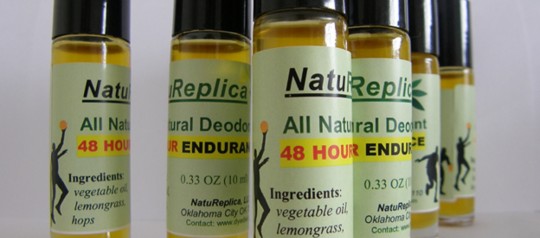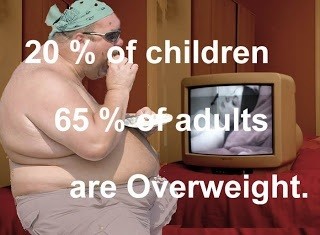The Dye Diet Calculator: Ingredient lists interpeted for you!
Tomorrow is the Dye Diet’s second anniversary. Guess what? I have a nice (I do hope!) present for you on this occasion! Please click on the Dye Diet Calculator link on the right menu of every page!!! Yes, for two years I have been publishing reviews on processed foods and beverages. For two years I have been developing, brushing and sharpening the Dye Diet approach in order to help you, my valued readers, to avoid risky food additives that may slowly undermine your health and the health of your families. For two years I have been showing you how, based on the ingredient lists, I calculate Health Risk (DDFI) and Nutritional Value (DDNF) of over 200 most popular products. Now I want to hand over the steering wheel into your own hands, leaving the final decision, as usual, up to you: your freedom of informed choice.
DyeDiet RECOMMENDED:
Let me briefly explain what exactly the Dye Diet Calculator is designed to offer you.
The scope: Processed food
Not all processed food is automatically bad. But it comes with more or less of food additives listed on labels as Ingredient List. Even minimally processed foods such as lentil, plain yogurt or cheese that we call “healthy” contain a few ingredients. Everybody knows that reading and more so understanding ingredient lists is a pain in the butt. Yes, it really is. And this is the primary reason why majority of consumers will always be reluctant reading them. It is not consumer’s fault: the majority of ingredient lists are indeed too technical to understand by not a professional chemist. You may still remember one of the “rules” like this one: Don’t Eat What You Cannot Pronounce which sounds like a scream of desperation to me, a professional chemist. What if someone cannot clearly pronounce “cauliflower” and does quite well with “splenda” – the synthetic chlorinated sugar (sucralose)? So the Dye Diet Calculator, created by the pharmaceutical chemist who knows exactly what every chemical food additive name means and what the additive can potentially do to living cells in human body, offers more reliable, scientifically-based solution for you. It does translate ingredient lists for you to TWO values: Health Risk and Nutritional Value in context of the Dye Diet approach. Also it gives you caloric and sugar content. In the future GMO and non-GMO information will be also included. Based on all these values YOU DECIDE if you want a product or not.
The basis: Analysis of ingredient lists
The Dye Diet Calculator is based on the results of tedious work I have done analyzing risk factors of over 300 food additives (with emphasis on the most potentially dangerous ones) which are the most often used in the American food supply. However, we have total over 3000 food additives approved by the FDA in our food. So what you can see today is a trial version of the Dye Diet Calculator for you to try. My next closest goal is to include all 3000 ingredients into the calculator for you to have no delays in finding out how good or bad virtually ANY given processed food product is. I have been doing the ingredient analysis for you, and I will keep doing this. Now, your business is to hit the “Calculate!” button to see the translated results you want. But I will also need your willing to help. Please keep reading.
The outcome: Risk and Nutrition of products
To operate the Dye Diet Calculator you simply need to start typing in ingredients. The entry is not case-sensitive. The calculator will give you immediate suggestions of what is in the database, so you will not have to type every scary name all the way. Every ingredient should be ADDED by hitting “add” button. However, if an ingredient is NOT yet in the database, please type it into all the way correctly. By doing so, YOU will HELP me to fill all the remaining ~ 2700 ingredients into the calculator and to make it even more useful.
Sometimes when an ingredient is missing, check for typos first, then trying synonyms or abbreviations may help. For instance, if “high fructose corn syrup” doesn’t work, try HFCS instead or vice-verse. Or instead of “non fat milk” you may be successful with “non-fat milk.” Another example: It is OK to use “potassium phosphate” instead of plural “potassium phosphates”. The outcome is pretty tolerant to deviations in the risk factor values. After you hit “Calculate!” button, Health Risk and Nutritional Value numbers and explanations will be displayed. The values come in different colors: green, yellow, red and purple. As you may guess, a “good” product is when the both values are green and the worst imaginable is when the both values are purple. Everything else is in between. Try and see for yourself!
In addition, for every ingredient you have introduced, you will have a link to a source you can open and read lots of details about each one of interest.
IMPORTANT: Do NOT use the exact calculated values as the quantitative reference yet. While current results certainly give you qualitative idea of how “good” or “bad” given product is, the values may be a little different from those published on dyediet.com in the past or those you may see when re-calculate the same product in the future. This is because I reconsider some aspects of the concept on-the-go. Thank you!
Product name database
A few weeks ago a new extremely important function was added: PRODUCT name database (like Coca-Cola diet or Great Value velvet cake, etc.). So you will be prompted to type-in full product name if the one is NOT yet in the database. The more products you help me to introduce the larger number of products will be stored for everyone else in the system. Therefore when you or other users come back later, they will not need to introduce neither ingredients nor full product names – the Calculator will make suggestions right after you have started and, if you accept, it will display the Risk, Nutrition and caloric and sugar content!
Please help, introduce just ONE product!
Please help me to build up the Dye Diet Calculator into the unique health improvement tool of a great importance for free use by everyone! All I am asking you for is just to play the Dye Diet Calculator toy and enjoy your involvement into the action of helping all of us to make healthier food choices!
Any, absolutely any your feedback, suggestions, questions and comments will be highly appreciated and carefully considered.
Thank you!
Sincerely Yours,
Nick (the Dye Diet creator guy)
Category: DyeDiet RECOMMENDED, Food and Risk, Healthy diet








I just added values for Coconut Wave (blue) soda and the health risk is 39/2 = 19.5 (unacceptable).
Thank you! I am not familiar with Coconut Wave. It looks like a nasty chemical swill, based on the calculation outcome.
Please read this site: http://www.msgexposed.com/
You can see the truth of MSG on this site.
I have read. The website you refer to is NOT credible: It is almost complete copy of the original publication by Natural News (among my “Useful links”) http://www.naturalnews.com/009379_monosodium_glutamate_MSG.html
The article also foolishly states that “they add fillers to it to make it [fast food] cheaper.” This is ridiculous ignorance. Fast food is cheap because AUTOMATED business model for the food supply and extremely LOW COST of labor in restaurant chains.
The studies referred in the latter article are irrelevant to the MSG in fast food for, at least, two reasons: 1) They are based on subcutaneous (under skin) injection of MSG to newborn mice – people do not eat that way and 2) The concentration was way higher than the amounts of MSG in fast food. Toxicity is ALWAYS linear function of concentration.
I am not saying that MSG is absolutely safe (NOTHING is safe if over-consumed!), but it is good to keep in mind that it is just sodium salt of glutamic acid naturally occurring in many foods anyway.
And, to conclude: The real cause of obesity is too much SUGAR and too much FAT in fast food that, in addition, make it ADDICTIVE, not MSG.
Also, why do you put exclamation points (!!) next to things like “32 ingredients”?
I am not sure what you mean. Sorry.
I mean, you put exclamation marks like this:
This product contains 25 ingredients for flavor (!!).
OK, I have meant that it was ridiculously too many… I didn’t realize that it could be misleading. Sorry.
No I mean what do the parenthesized exclamation marks mean (!!).
Well, I say, excitement in negative sense, like exciting frustration…
Add the following ingredients to the calculator:
Chicken
Dimethylpolysiloxane (anti foaming agent)
Peanut oil
Peanuts
Color added
Mechanically separated chicken
Sodium bisulfite
Oh! Thanks a lot, I will do that ASAP!
The values are in database now. When typing-in, always start with the first characters and see what is suggested. Keep typing if the right suggestion is not yet shown up.
Here are some more ingredients to add:
Papaya
Papaya chunk
Blue cheese
Swiss cheese
Parmesan cheese
Mozzarella cheese
Pineapple chunk
Fruit and vegetable juice (from concentrate)
Lard
Hydrogenated lard
Calcium hexametaphosphate
Potassium hexametaphosphate (if not already)
Partially hydrogenated coconut oil
Partially hydrogenated vegetable oil
Autolyzed yeast extract
Processed cheese
Mixed tocopherols
Artificial color
and 100 more ingredients
Thank you! Some of them are in the system but many – don’t. OK, I will add them ASAP, thank you again!!
Add popping corn too.